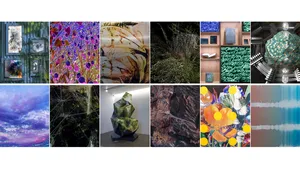¡Que aproveche! Spain’s culinary heritage

Food is at the very heart of Spanish culture, with traditional recipes being passed down from one generation to the next across the nation’s regional communities. It’s a fragile heritage though, and one that can be easily lost in the rapid pace of today’s world.
To preserve this heritage, Google Arts & Culture, working with curator and gastronomic researcher María Llamas, and the Real Academia de Gastronomía, presents Spanish Food: Cooking Memories. Following on from Spain: Open Kitchen – our first-ever virtual exhibit about food culture – this is the second installment dedicated to Spanish cuisine.
The focus here turns to those who’ve kept recipes alive through cooking at home, in convents, or in culinary societies. From the traditional recipes of Spanish grandmothers to the treasures hidden in family cookbooks, Spanish Food: Cooking Memories seeks to preserve this heritage for the future.
To get started on your culinary journey, here are five things to explore right away:
Learn recipes from those who’ve spent a lifetime cooking
There’s no better way to learn a recipe than by watching an experienced hand cook it themselves. That’s exactly what you can do here. Start with learning how to bake Roscón De Reyes – or Spanish King’s Cake - with entrepreneur Clara María González de Amezúa and her grandchildren.
Discover a project digitizing old family cookbooks
Old family cookbooks of handwritten recipes are a rich repository for Spain’s culinary heritage. But how many of them are crumbling away on dusty bookshelves and in damp cellars? Happily, there are people digitizing them so their secrets can be preserved for future generations. Discover Los Recetarios (Cookbooks) – a project dedicated to doing just that.
Spend a day cooking with Catalan women
La Cuina a Sils is a culinary society dedicated to recovering and preserving the gastronomic memory of Sils – a town with a rich food heritage in the Girona province of Catalonia. In this story, you’ll spend a day cooking escudella (a meat stew) with the remarkable women who run the society, and learn of the extraordinary community they’ve built.
Delve into the story of chocolate made in Spanish convents
Home kitchens aren't the only places where traditional recipes are preserved in Spain. In the convents of the order of the Clarisas, the nuns have a history of baking and making confectionary – from sponge cakes and muffins to chocolate and donuts. In this story, you’ll learn how these nuns turned to making artisanal chocolate out of necessity – and how it transformed their lives forever.
Test your knowledge through gastronomic quizzes
When you’ve explored the many culinary treasures of Spanish Food: Cooking Memories, test your knowledge with these three quizzes about Spanish gastronomy: Which Spanish produce originated from the Americas? Can you identify different kinds of seafood? Would you know what to eat at certain celebrations?
Discover how to bake a “Roscón de Reyes” (Spanish King’s Cake) with entrepreneur Clara María González de Amenzúa and her grandchildren.
Sometimes recipe books are handed down from generation to generation of the same family. This is the case with Catalina Ubis' recipe book, compiled by five generations of women.
La Cuina a Sils is a culinary society dedicated to recovering and preserving the gastronomic memory of Sils – a town with a rich food heritage in the Girona province of Catalonia.
The Clarisas nuns in Belorado, Burgos, have expanded their traditional range of cakes and pastries and taken up chocolate making.
Beans with clams is a succulent Asturian stew that combines ingredients from both the sea and the mountains: fava beans grown in the fields, and clams from the Bay of Biscay.
Of course, there is much more to discover in Spanish Food: Cooking Memories. With 38 exhibits curated by gastronomical experts, three video collaborations with people who have spent a lifetime cooking and more than 1000 photographs taken specially to illustrate this project, you’ll experience Spanish food culture in all its richness.
We invite everyone to explore the treasures of Spanish culinary heritage. Have a taste of the project at g.co/cookingmemories and on the Google Arts & Culture app on iOS or Android.






